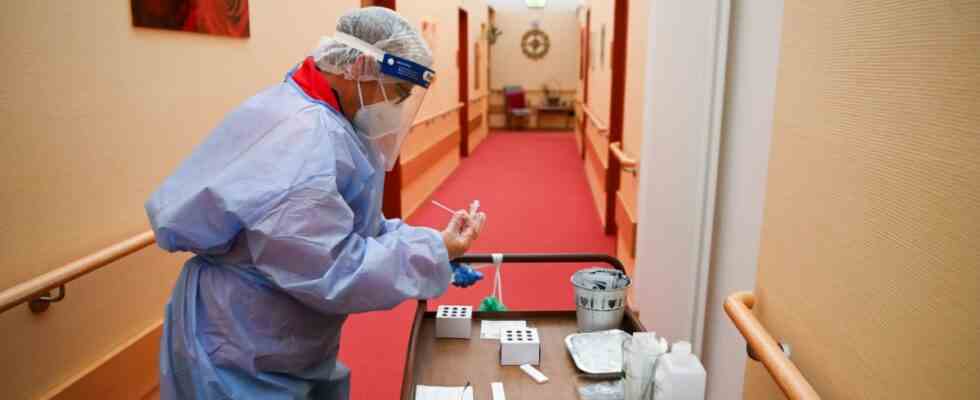Last Sunday, when the results of the quick tests of 14 of the 166 residents of the Marienheim in Glonn were positive, the unfortunate situation was already announced. It has been certain since Tuesday morning: 41 senior citizens of the Caritas facility have been infected with Corona, as have seven of the 160 employees. It is currently the largest outbreak in a care facility in the Ebersberg district. How can such a large outbreak happen despite strict protective and hygiene measures and regular testing of staff, residents and visitors?
Demand from the district office: “With an incidence of currently over 2000, it is unfortunately inevitable that the virus will also make it into vulnerable areas,” says Christiane Siegert from the press office. On Tuesday, the district reported an incidence of 2294.4 with 473 new infections – a week earlier it was 258. And the situation could get worse. Because the so-called biomarkers have increased significantly in the wastewater analyzes in Ebersberg, Grafing and Glonn. This suggests a further increase in the number of infections, as the district office announced in a press release.
One thing is certain, as Christiane Siegert expressly emphasizes: there are definitely no deficiencies in the protection concepts and their compliance in the Marienheim. Apart from Glonn, 26 Covid-positive residents were reported in five other facilities in the district as of Tuesday evening.
There is also good news in this mixed situation: the cases in Marienheim are mild courses with a cough or runny nose. So far, no one has needed treatment in the district clinic. In his house, almost 100 percent of the seniors are fully vaccinated, says facility manager Hubert Radan. 60 residents received their fourth vaccination just last week. In addition, the PCR tests would have resulted in rather high Ct values for the positive residents – the Ct value indicates the viral load and thus provides information about the risk that this person poses to infect others. A value above 30 indicates a low viral load.
Nevertheless, that’s no reason for Hubert Radan to give the all-clear. The virus makes the rounds extremely quickly because of its high level of infectivity. “I’m worried that a few more employees will be added by the end of the week – because at the moment everyone is sick everywhere.” More infected nurses mean more staff absences. The situation is currently manageable to compensate for the current failure. “But if there are seven or more cases, then things will get critical,” says Radan. And then what?
Home manager Hubert Radan cannot hope for support from other facilities if more staff are absent – because there are no longer any free resources there either.
(Photo: Peter Hinz-Rosin)
Radan does not hope for support from other Caritas houses, from which staff could be temporarily borrowed. “I regularly receive messages from colleagues from other institutions asking whether there is personnel capacity left to help out.” The situation is the same in every nursing home: there is a high rate of corona-related illness everywhere. Hardly anyone has resources left over to do without forces from their own house.
Radan names two other options that could work in the worst case. Either the care of the residents must be limited to the minimum. “Then you can’t really bathe this week,” says the director of the home. Or, with the approval of the health department, an arrangement could be made to allow positive asymptomatic nurses to care for positive residents. But there is still no need to pull these absolute contingency plans out of the drawer. And Radan remains optimistic: “Somehow we will certainly make it all.”

